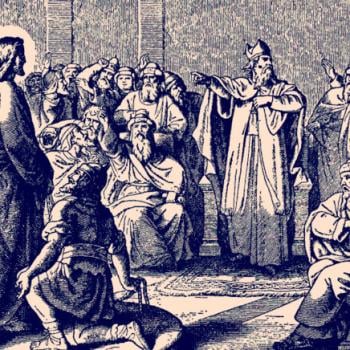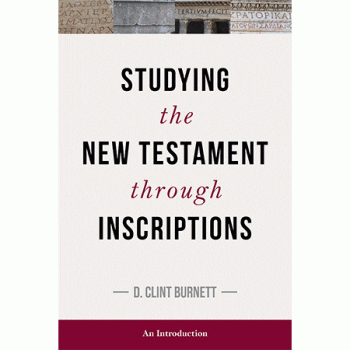DAVID GURETZKI, AN EXPLORER’S GUIDE TO KARL BARTH (DOWNERS GROVE: IVP, 2016)
and
MARK GALLI, KARL BARTH: AN INTRODUCTORY BIOGRAPHY FOR EVANGELICALS (GRAND RAPIDS: EERDMANS, 2017)
By Dr. Chris Swann
This was a difficult review to write.
 This may seem a strange thing to say about Mark Galli’s Karl Barth: An Introductory Biography for Evangelicals and David Guretzski’s An Explorer’s Guide to Karl Barth. Neither book is hard to read. Far from it! Both books are accessible, clear, and coherent. Moreover, both books manage to synthesise and distill Barth’s formidable theology — and the no less formidable mountain of secondary literature around it — in ways that are simple without being simplistic.
This may seem a strange thing to say about Mark Galli’s Karl Barth: An Introductory Biography for Evangelicals and David Guretzski’s An Explorer’s Guide to Karl Barth. Neither book is hard to read. Far from it! Both books are accessible, clear, and coherent. Moreover, both books manage to synthesise and distill Barth’s formidable theology — and the no less formidable mountain of secondary literature around it — in ways that are simple without being simplistic.
Each achieves this non-simplistic simplicity in their own way. Galli’s explicit goal of introducing to Barth and his theology to evangelicals follows the well-worn path of biography, charting the enduring themes and developments in Barth’s life and career in such a way as to introduce the reader to what is a diverse, intimidating, and (especially in the case of American evangelicalism) suspicious body of work. The “reader” in this case is someone more or less unfamiliar with Barth’s work — or potentially familiar with it only by dubious reputation, informed by clashing reverberations of Cornelius Van Til’s hostile rejection of Barth and mutterings about the questionable relationship between Barth and his life-long “secretary,” Charlotte von Kirschbaum. In this book, it must be said, it is Van Til’s objections that are uppermost in Galli’s mind — as attested by his close engagement with the key flashpoints of Barth’s doctrine of revelation (chapter 11) and his understanding of salvation in light of his revised doctrine of election (chapter 12).
Given his readership, Galli’s biographical approach is clearly calculated as a safer way to engage Barth’s theology than a frontal assault might be. And he exploits this safety fully. On the one hand, he admits that following this route keeps him on firm, well-established scholarly ground: “I’m not intending a fresh work of scholarship but a readable narrative based on the scholarship that has gone before me” (xiv). When he reads Barth in ways that depart from or clash with Van Til’s (as he must, Van Til was very far from the mark on a number of points when it comes to Barth), Galli has the precedent of trusted scholarship to fall back upon. On the other hand, he’s clear that this is not biography for its own sake. Galli is up front in admitting that he is not attempting “to give a detailed, balanced, or complete view of [Barth’s] life” (xiii). He has an agenda. Galli aims to introduce evangelical readers to Barth is precisely to diagnose and offer a theological therapy for a malaise from which he perceives American evangelicalism to be suffering — namely, an overemphasis on the subjective. Barth recommends himself at this point because his own theology emerged out of a similar critique of subjectivism, albeit in the liberalism he emerged out of dramatically with his 1916 commentary on Romans. This agenda is made explicit in the final chapter of Galli’s book — although it exerts a shaping pressure on the whole. In self-consciously serving a contemporary agenda like this, there are obvious lines of connection between Galli’s “introductory biography” of Barth and Eric Metaxas’s infamous biography of that other German-speaking theologian who has become a touchstone of contemporary evangelicalism, Dietrich Bonhoeffer. (Admittedly, Galli’s overarching agenda is less partisan political than that of Metaxas.)
In An Explorer’s Guide to Karl Barth, Guretzki also assumes a readership relatively unfamiliar with Barth and his theology. Notably, Guretzki includes within his scope not only those influenced by the Van Tillian hostility to Barth but also those at the more liberal of the theological spectrum who reject Barth for different reasons: “for those schooled in the historical-critical methods of scriptural interpretation, it seemed as if Karl Barth was simply too theologically and exegetically naive” (p 7). As a result, Guretzki’s book will be most useful across a wide range of introductory courses. Consistent with this, he adopts the model of an “explorer’s guide” — it’s a kind of Lonely Planet pocket book to help readers grapple with Barth. In approaching Barth like this, Guretzki like Galli swears off novelty or the desire to make an original scholarly contribution to Barth studies. What he does instead is seeks to equip readers to negotiate the potentially bewildering terrain of Barth’s theological emphases, historical and polemical contexts, and writing style. Where Galli employs the vehicle of biography to take readers on a guided tour of Barth — focusing on the major landmarks of Barth’s innovative doctrines of revelation and election — Guretzki opts to focus on preparatory work.
Guretzki works to prepare budding readers of Barth in a number of ways. For instance, he spends time surveying the map of the Barthian landscape with readers, touching on some basic but important matters of biography as well as providing a structural overview of the Church Dogmatics with an eye to some of the most significant (if still disputed) developmental issues in the theology articulated across its many volumes and subvolumes. In addition, Guretzki cleverly supplies readers with numerous tools and navigation instruments to help them make their way through Barth’s theology. Extremely helpful in this regard is the glossary of important terms and people in chapter 4 as well as the sequence of “explorer’s tips” littered throughout the book. Guretzki supplements this preparatory material by leading readers on some brief forays to immerse them in various aspects of the challenge and value of engaging with Barth — e.g., in chapter 7 he provides pointers on using Barth in preaching, starting a Barth reading group, and writing a theology paper on Barth.
What could be difficult about two books so clearly pitched at making Barth accessible and primed for a non-expert readership?
To begin with, the very fact that either book had to be written attests to some degree of difficulty. A number of very fine introductions to Barth aimed at a general readership already exist. One thinks of those by Eberhard Busch and John Webster. And of course there are the more technical primers by Hans Urs Von Balthasar, George Hunsinger, and Bruce McCormack.
Why then add to these — unless new information about Barth and his theology has come to light? As already alluded to, the answer lies in the strong, preexisting pressures to reject Barth — particularly those prevalent in the North American evangelical scene. The influence of these pressures is felt throughout both books, especially where potentially controversial points are touched upon. Galli, for example, labours to provide an even-handed treatment of both Barth’s approach to revelation and his revision of the doctrine of election. In both cases, he appeals for sympathy with Barth — e.g., positioning his revision of election within the context of ongoing debate between Calvinists and Arminians — while refusing to completely endorse or provide an apologetic for Barth’s conclusions (although he comes closer to this is expounding Barth’s view of revelation than he does in the case of his approach to election with its supposed universalistic implications). Similarly, Guretzki frames his explorer’s guide as useful not so much for baptising new followers of the Barthian way but rather for equipping friends and foes alike for what is an unavoidable aspect of preparing for and doing theological work today. Hence he observes, “one cannot claim to be engaged in the study of Christian theology without in some way engaging or at least becoming familiar with Karl Barth” (p 8). Or again: “In the end you don’t have to like Barth, but you will be hard pressed to ignore him if you want to be truly theologically informed” (p 8). (The testimony of no lesser theologians than John Webster and Katherine Sonderegger could be cited to corroborate this point. Webster famously reflected on the fact that it took him most of his career to begin to get out from under Barth’s shadow. And Sonderegger’s Systematic Theology, which takes such a systematically and self-consciously non-Barthian approach to foundational questions — including God’s relation with the world as well as what can and cannot be said about God’s self-revelation — does so in profound and near-constant conversation with Barth and, I would argue, in a way that is ultimately more faithful to the spirit of Barth’s approach to theology than not.)
A further difficulty with the evangelical anti-Barthianism that influences these two books arises from the fact that I find it mildly baffling. While I have long been aware of Van Til’s criticism, for example, the particular reception history of Barth in Australia has always made the sensitivities of my North American counterparts appear slightly odd in this regard. Others have documented this reception history more ably than I could.[1] Nevertheless, it is worth registering how the Australian context of reception contrasts with that of the US, where Barth was from the first lumped in with Neo-Orthodoxy and his theology initially gained a foothold in theological institutions that were less than friendly to evangelicalism. Evangelicalism in Australia has had a markedly different tone in its engagement with the wider social context than US evangelicalism, inflected as it has been by fundamentalism and political conservatism. Of course, Australian evangelicalism has not been without its fair share of moral and political conservatives. Yet during the tumultuous decades of the 1960s and 70s, Barth’s theologically grounded resistance to nationalism was seized upon as a key resource for Christian engagement with Australian society by figures as diverse as the staunch NSW Presbyterian minister and sociologist, Hans Mol, and the ecumenical pioneer of the Uniting Church, Davis McCaughey.[2] In the past as now, Barth loomed large across the spectrum of Australian evangelicalism. Indeed, even at such a bastion of conservative evangelicalism as Moore Theological College it was — at least in my time — simply expected that students would read and engage with Barth (and woe betide you if your engagement was only deep enough to allow for cheap point scoring!). From this perspective, some of the energy Galli and Guretzki both expend to distance themselves from Barth at key points feels miscalibrated. Although, it no doubt retain its significance for North American evangelical readers and those influenced by them (including in Australia).
A final difficulty in reviewing these two books offering to introduce Barth to evangelicals emerged shortly after Galli’s book hit shelves. The shadowy and troubling nature of Barth’s relationship with his live-in “secretary,” Charlotte von Kirschbaum, had long been a topic of speculation and muttered questions about to Barth’s theology. Such questions have not only been posed by evangelicals; as Katherine Sonderegger remarks, “Barth’s own intimacies with women do not make an alliance with feminism appear too promising.”[3] All of this came to a head in a way that sharply qualifies whether and how students might be introduced to and begin to explore Barth’s theology when Christiane Tietz published an article focused on correspondence between Barth and Charlotte dating from 1926-1932. While this correspondence was published in German in 2008, Tietz rendered significant portions of it into English for the first time in a 2016 conference paper that was then published in Theology Today in 2017.[4] To be sure, the fact and difficulty of this relationship was well established in Barth studies long before this. Yet the details Tietz uncovered are tragic, sordid, and disturbing. What is more, they problematise the status not only of Barth’s conduct but also of the extent to which his theological formulations played a role in his self-justifying and at times manipulative attempts to control its interpretation. The emergence of these details into public scrutiny roughly coincides with the broader cultural phenomena #metoo and other associated campaigns to shine a spotlight on the extent to which powerful men — both within the church and outside it — have tended to exploit and abuse their position.
Galli has written a kind of publicly available addendum on this issue in Christianity Today. All the same, the issues Barth’s relationship with Charlotte raises create a difficulty not only for these two books offering to introduce Barth and his theology to a primarily evangelical audience; they also create difficulty for a reviewer. The difficulty arises from the fact that even though issues cannot be resolved in a brief review — just as they probably could not have be resolved in either introductory treatment — neither can they be left to the side. A responsible reading of Barth’s theology demands that they be borne in mind, and their impact assayed — not only at the predictably points (e.g., as they touch upon Barth’s theology of marriage) but at many others. Barth’s behaviour cannot be excused or its deleterious significance mitigated. At the same time, it remains true that as both Galli and Guretzki observe in different ways, Barth’s presence among the theologians and influence upon contemporary theology — flawed and compromised as it is — cannot be avoided.
[1] See, for example, Ben Myers, “Karl Barth’s Theology in Australia,” in Dogmatics after Barth: Facing Challenges in Church, Society, and the Academy, ed. Günter Thomas, R. H. Reeling Brouwer, and Bruce McCormack (Leipzig, 2012), pp 53-64. Myers focuses on the way Barth — and especially the Barmen declaration — influenced the formation of the Uniting Church in Australia in the 1970s. But his passing comment about the simultaneous prevalence of Barth scholars in Australian seminaries and yet a lack of any peculiarly Australian Barthianism is telling: “while Karl Barth’s theology is surprisingly well represented in Australian seminaries — scholars who have published substantive research on Barth hold key positions at several of the country’s leading colleges — one cannot speak of any distinctively ‘Australian’ Barthian theology” (p 53). This resonates with own experience in Australian seminaries: Barth is everywhere and nowhere; not only can he not be exclusively claimed by any one seminary or theological stream, but his theology has been influential and studied even where that might not be expected, including Moore College.
[2] With regard to Mol, see Hugh Chilton, Evangelicals and the End of Christendom : Religion, Australia and the Crises of the 1960s (London: Routledge, 2020), chapter 4. With regard to McCaughey, see Myers, “Karl Barth’s Theology in Australia.”
[3] Katherine Sonderegger, “Barth and Feminism,” in The Cambridge Companion to Karl Barth, ed. John
Webster (Cambridge: Cambridge University Press, 2000), p 259. Sonderegger’s verdict is undergirded by two significant studies of the relationship from a feminist perspective: Suzanne Selinger, Charlotte von Kirschbaum and Karl Barth: A Study in Biography and the History of Theology (University Park: Pennsylvania State University Press, 1998), and Renate Koebler, In the Shadow of Karl Barth: Charlotte von Kirschbaum, trans. Keith Crim (Eugene: Wipf & Stock), 2013.
[4] Christiane Tietz, “Karl Barth and Charlotte von Kirschbaum,” Theology Today 74.2 (2017): pp 86–111.
















